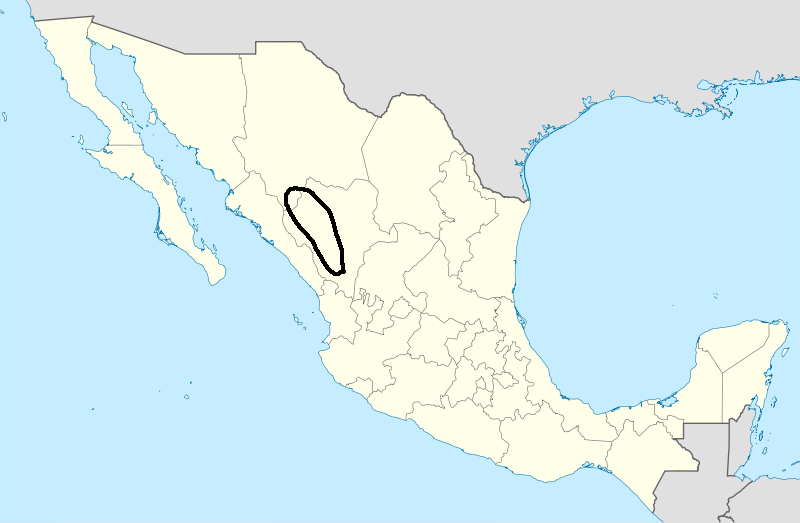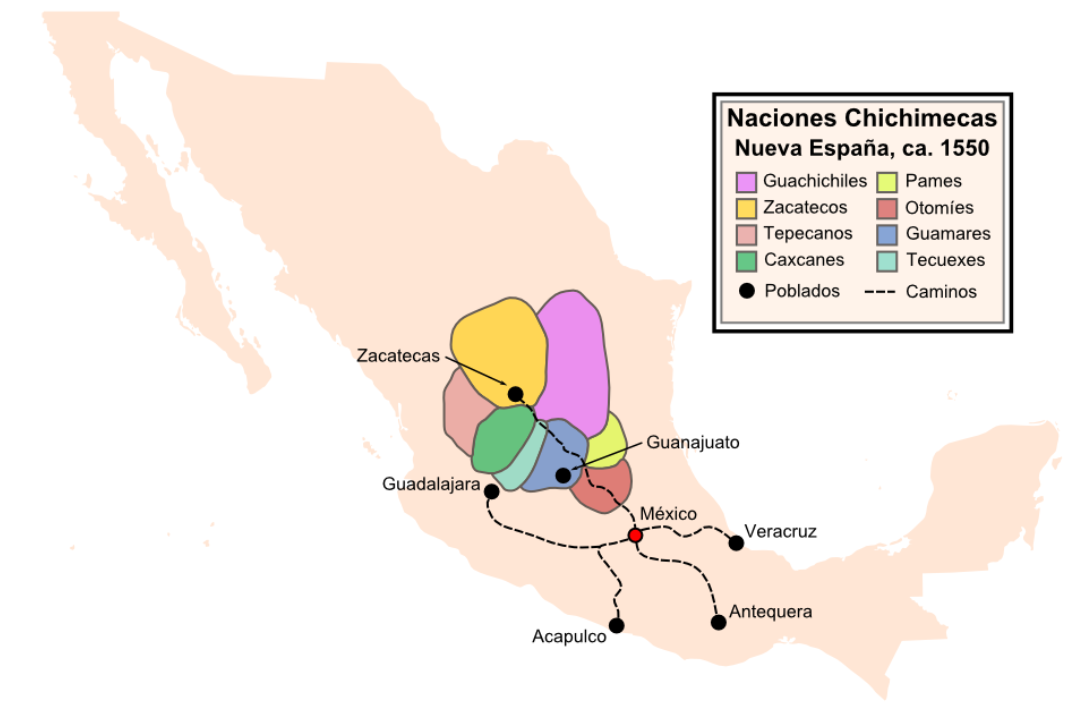|
Xiximes
The Xixime were an indigenous people who inhabited a portion of the Sierra Madre Occidental mountains in the present day states of Durango and Sinaloa, Mexico. The Xixime are noted for their reported practice of human cannibalism, cannibalism and resistance to Spanish colonization of the Americas, Spanish colonization in the form of the Xixime Rebellion of 1610. Language The Xixime spoke Xixime language, Xixime, a poorly documented, now-extinct Uto-Aztecan languages, Uto-Aztecan language. Dialects of Xixime included Hine and Hume (to the north and south of the Xixime territory, respectively). The exact classification of the language is unknown although it may belong to the Taracahitic languages, Taracahitic branch. Cannibalism A considerable amount of the scholarship and media attention devoted to the Xixime has focused on the group's reported practice of cannibalism. While a variety of colonial Spanish accounts of the Xixime report the culture engaged in frequent, ritual co ... [...More Info...] [...Related Items...] OR: [Wikipedia] [Google] [Baidu] |
Acaxee
The Acaxee or Acaxees were a tribe or group of tribes in the Sierra Madre Occidental in eastern Sinaloa and NW Durango. They spoke a Taracahitic language in the Southern Uto-Aztecan language family. Their culture was based on horticulture and the exploitation of wild animal and plant life. They no longer exist as an identifiable ethnic group., accessed 1 Feb 2011 History Before Spanish Colonization, the population of the Acaxee was roughly 20,000 organized into many smaller independent chiefdoms. They lived in very low-density farms with homes separated by up to half a kilometer. Early accounts by Jesuit missionaries allege continual warfare and cannibalism among the Acaxee, Tepehuan, and Xixime who inhabited Nueva Vizcaya. The Spanish conquered Sinaloa from 1529 to 1531 which included conquering the Acaxee. They were devastated by Spanish introduced diseases and the encomienda system. In December 1601, the Acaxees, under the direction of an elder named Perico, began an up ... [...More Info...] [...Related Items...] OR: [Wikipedia] [Google] [Baidu] |
Tepehuán Revolt
The Tepehuán Revolt broke out in New Spain in 1616 when the indigenous Tepehuán attempted to break free from Spanish rule. The revolt was crushed by 1620 after a large loss of life on both sides. Tepehuán people The Tepehuán people lived on the rugged eastern slopes and valleys of the Sierra Madre Occidental, primarily in the future state of Durango. They spoke a Uto-Aztecan language and depended mostly on agriculture for their livelihood. Thus, they differed from their neighbors in the deserts to the east, the Chichimeca who were nomadic and semi-nomadic hunter-gatherers. The Tepehuán, Acaxee, and Xiximes, Xixime to their west shared common traits such as The Tepehuán suffered a series of devastating epidemics of European-introduced diseases in the years before the revolt. Epidemics were known to have occurred in their region in 1594, 1601-1602, 1606-1607, 1610, and 1616-1617. The Tepehuán and their neighbors may have been reduced in population by more than 80 perce ... [...More Info...] [...Related Items...] OR: [Wikipedia] [Google] [Baidu] |
Tepehuán
The Tepehuán are an Indigenous people of Mexico. They live in Northwestern, Western, and some parts of North-Central Mexico. The Indigenous Tepehuán language has three branches: Northern Tepehuan language, Northern Tepehuan, Southeastern Tepehuan language, Southeastern Tepehuan, Southwestern Tepehuan language, Southwestern Tepehuan. The heart of the Tepehuan territory is in the Valley of Guadiana in Durango, but they eventually expanded into southern Chihuahua (state), Chihuahua, eastern Sinaloa, and northern Jalisco, Nayarit, and Zacatecas. By the time of the Spanish conquest of the Aztec Empire, Tepehuan lands spanned a large territory along the Sierra Madre Occidental. Tepehuán groups are divided into the Ódami (Northern Tepehuán), Audam (Southwestern Tepehuán), and O'dam (Southeastern Tepehuán), each with their own language, culture, and beliefs. Name ''Tepehuán'', alternately ''Tepeguán'', derives from the Nahuatl term ''Tēpēhuanih'', meaning "Mountain Dwellers" ... [...More Info...] [...Related Items...] OR: [Wikipedia] [Google] [Baidu] |
Durango
Durango, officially the Free and Sovereign State of Durango, is one of the 31 states which make up the Political divisions of Mexico, 32 Federal Entities of Mexico, situated in the northwest portion of the country. With a population of 1,832,650, the 8th lowest of Mexico's states, Durango has Mexico's second-lowest population density, after Baja California Sur. The capital city, Durango, Durango, Victoria de Durango, is named after the first President of Mexico, Guadalupe Victoria. Geography General information The area of Durango is ; this accounts for about 6.3% of the entire territory of Mexico. It is the fourth largest state, lying at the extreme northwest of the Mexican Plateau, Central Mexican Plateau, where it meets the Sierra Madre Occidental—the highest peaks in the state. The state has an average elevation of 1,775 meters above sea level, with a mean elevation of 1,750 m in the Valleys region and 2,450 m in the Sierra region. The Durango City, city of Durango is on t ... [...More Info...] [...Related Items...] OR: [Wikipedia] [Google] [Baidu] |
Sinaloa
Sinaloa (), officially the (), is one of the 31 states which, along with Mexico City, compose the Federal Entities of Mexico. It is divided into 18 municipalities, and its capital city is Culiacán Rosales. It is located in northwest Mexico and is bordered by the states of Sonora Sonora (), officially Estado Libre y Soberano de Sonora (), is one of the 31 states which, along with Mexico City, comprise the Administrative divisions of Mexico, Federal Entities of Mexico. The state is divided into Municipalities of Sonora, 72 ... to the northwest, Chihuahua (state), Chihuahua to the north and Durango to the east, both across the Sierra Madre Occidental; and Nayarit to the southeast. To the west, Sinaloa faces Baja California Sur, across the Gulf of California. The state covers an area of and includes the islands of Palmito Verde, Palmito de la Virgen, Altamura, Santa María, Saliaca, Macapule, and San Ignacio. In addition to the capital city, the state's important cities inc ... [...More Info...] [...Related Items...] OR: [Wikipedia] [Google] [Baidu] |
Cueva Del Mague
Cuevas or Cueva (Spanish for "''cave(s)''") may refer to: Places * Cueva de Ágreda, a municipality located in the province of Soria, Castile and León, Spain * Cuevas Bajas, a town and municipality in the province of Málaga, part of the autonomous community of Andalusia in southern Spain * Cuevas de Almudén, a town in the province of Teruel, Aragón, Spain * Cuevas del Almanzora, a municipality of Almería province, in the autonomous community of Andalusia, Spain * Cuevas del Becerro, a town and municipality in the province of Málaga, part of the autonomous community of Andalusia in southern Spain * Cuevas del Valle, a municipality in the province of Ávila, Castile and León, Spain * Cuevas de Provanco, a municipality in the province of Segovia, Castile and León, Spain * Cuevas de San Clemente, a municipality in the province of Burgos, Castile and León, Spain * Cuevas de San Marcos, a town and municipality in the province of Málaga * Cuevas de Vera, a town in so ... [...More Info...] [...Related Items...] OR: [Wikipedia] [Google] [Baidu] |
Indigenous Peoples Of Aridoamerica
Aridoamerica is a cultural and ecological region spanning Northern Mexico and the Southwestern United States, defined by the presence of the drought-resistant, culturally significant staple food, the tepary bean ('' Phaseolus acutifolius'').Pratt and Nabhan 419 Its dry, arid climate and geography stand in contrast to the verdant Mesoamerica of present-day central Mexico into Central AmericaCordell and Fowler 85 to the south and east, and the higher, milder "island" of Oasisamerica to the north. Aridoamerica overlaps with both. Because of the relatively hard conditions, the pre-Columbian people in this region developed distinct cultures and subsistence farming patterns. The region has only to of annual precipitation. The sparse rainfall feeds seasonal creeks and waterholes.Bye and Linares 273 The term was introduced by American anthropologist Gary Paul Nabhan in 1985, building on prior work by anthropologists A. L. Kroeber and Paul Kirchhoff to identify a "true cultural ... [...More Info...] [...Related Items...] OR: [Wikipedia] [Google] [Baidu] |
Gobernador Francisco De Urdiñola
Gobernador is a municipality in the province of Granada, Spain. As of 2010, it has a population of 286 inhabitants. See also * List of municipalities in Granada Province of Granada, Granada is a provinces of Spain, province in the Autonomous communities of Spain, autonomous community of Andalusia, Spain, which is divided into 174 Municipalities of Spain, municipalities. Spanish census, Granada is the ... References Municipalities in the Province of Granada {{Granada-geo-stub ... [...More Info...] [...Related Items...] OR: [Wikipedia] [Google] [Baidu] |
Francisco De Urdinola
Francisco is the Spanish and Portuguese form of the masculine given name ''Franciscus''. Meaning of the name Francisco In Spanish, people with the name Francisco are sometimes nicknamed "Paco". San Francisco de Asís was known as ''Pater Communitatis'' (father of the community) when he founded the Franciscan order, and "Paco" is a short form of ''Pater Communitatis''. In areas of Spain where Basque is spoken, " Patxi" is the most common nickname; in the Catalan areas, "Cesc" (short for Francesc) is often used. In Spanish Latin America and in the Philippines, people with the name Francisco are frequently called "Pancho". " Kiko"and "Cisco" is also used as a nickname, and "Chicho" is another possibility. In Portuguese, people named Francisco are commonly nicknamed " Chico" (''shíco''). People with the given name * Pope Francis (1936-2025) is rendered in the Spanish, Portuguese and Filipino languages as Papa Francisco * Francisco Acebal (1866–1933), Spanish writer and autho ... [...More Info...] [...Related Items...] OR: [Wikipedia] [Google] [Baidu] |


